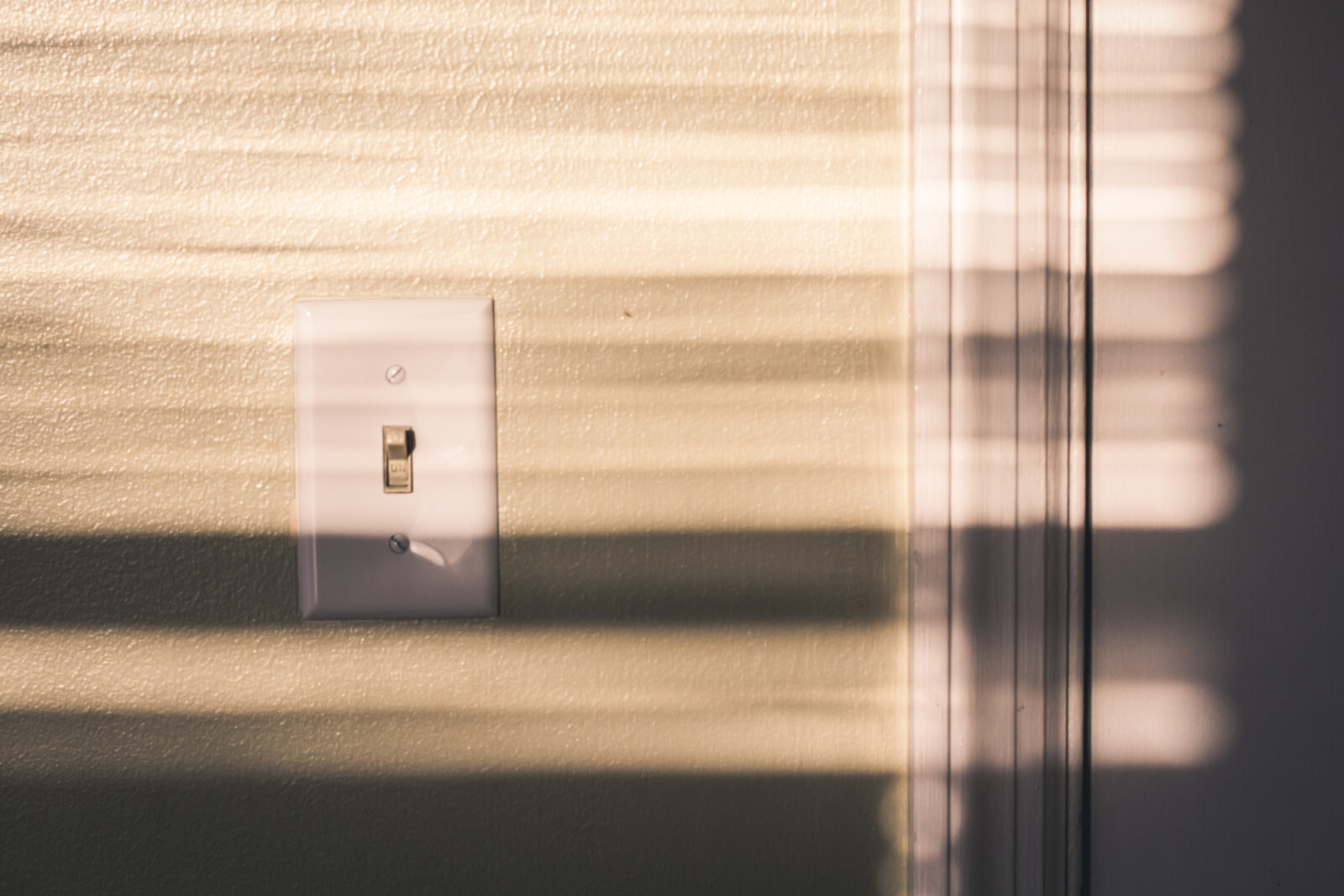Dimmer switches are excellent for setting the mood, creating energy savings, and increasing the life of your Light bulbs. In fact, I have dimmers on almost every Light in my home. And while you can use a dimmer with any type of Light bulb, certain bulbs work best with dimmers. A good choice depends on knowing which style works best in your space and what features are most important. And don’t worry: you won’t need an electrical degree to figure it out—just follow these simple tips! Before we get into how to choose a dimmer switch, we should examine what a dimmer switch is and what it does.

What to Look for When Choosing Dimmer Switches
What is a dimmer switch?
You can use a dimmer switch to adjust the brightness of lights – it’s used to control the brightness of lights. A dimmer switch is a handy tool to change the lighting in your home at night or during different times of the day. For example, if you have an outdoor light that needs to be switched on at night, then using a dimmer will allow you to do so without worrying about blinding people with bright Light as they walk down your street.
If you’re looking for more information about what dimmers are available today, check out this article!
Choose a dimmer that is designed explicitly for your Light bulbs.
It’s essential to choose a dimmer switch designed explicitly for your Light bulbs. Dimmer switches are rated for a specific wattage, so if you don’t select one rated for the wattage of your bulbs, you may risk overloading the circuit and causing damage to the wall outlet or wiring. For example, if you have 60-watt bulbs in your ceiling fan lights and want to use a dimmer switch with those lights, make sure it is rated for 60 watts—otherwise, it could cause overheating or even start a fire!
The same goes for incandescent bulbs (as opposed to LEDs); they are usually limited by their own wiring. If you try to connect an incandescent bulb with an incompatible dimmer switch by forcing them together to save money on new fixtures (or simply because they look nice), you will likely get poor performance and risk smoke inhalation!

Can a dimmer switch save energy?
Dimmer switches can save energy in several ways. First, they reduce the amount of light that is used. When you dim a light, it appears brighter but uses less electricity and generates less heat than it would at full brightness.
Secondly, they reduce the amount of electricity used by devices plugged into them (like a lamp). For example: let’s say you have an old-fashioned incandescent bulb plugged into your new dimmer switch; if you set it to 20% power on full blast, you’ll use about 60% as much electricity as if you had left your Light on at 100%.
Thirdly and finally: since dimming lights reduces their brightness and thus eliminates glare from harsh overhead lighting fixtures or overhead fluorescent bulbs (which also produce excess heat), this can help keep rooms more relaxed during summer months—especially important in hotter climates where air conditioning costs more money!
What types of dimmer switches are there?
There are many types of dimmer switches, each designed to control electricity flow to a light fixture. These range from single-pole and three-way to four-way, five-way, and six-way dimmers that control multiple lights at once. Before purchasing, it is crucial to understand the differences between these types.
Single pole dimmers are the most common type used in homes today because they work with two switches (one on/off switch and one slide style). They come in both flush mount and decorator styles and many different colors! Three-way circuits are also very common because they provide lighting to two separate areas without running an extra wire or using another switch. Four-way circuits include 4 switches in total, including 2 On/Off & 2 Slide Style, which allows for independent control over multiple lighting fixtures from just one location!
Dimmer Styles
Dimmer styles include:
- Single pole dimmers. These are the most common type of dimmer and are used to control lights from a single location.
- Three-way dimmers. These allow you to control lights from two different locations, and their wiring requires an additional wire for the third switch.
- Four-way dimmers. These will enable you to control lights from three different locations, and their wiring requires an additional wire for the fourth switch.
- Five-way dimmers. These allow you to control lights from four different locations, and their wiring requires an additional wire for the fifth switch (i.e., three wires total).
- Six-way dimmers/seven/eight-way: See above; these require even more wires!
Which kind of dimmer is best for my room?
When shopping for dimmers, you’ll find them in various styles and sizes. Traditional switches can be installed on the wall and pull-chain switches that attach to the ceiling. Some of these options have built-in remotes with touch pads or buttons that allow you to control them from across the room. Some even feature timers so that you don’t have to get up every time you want to change the lights!
No matter what style of dimmer switch you want, there’s an appropriate dimmer switch out there for your home—and it will complement its surroundings beautifully!
Choose a switch that fits into the decor of your home.
While choosing a dimmer switch may seem like a no-brainer, there are some things to consider when picking out the right one for your home. When shopping for a dimmer switch, you should think about how it looks and feels in the room.
- Is it going to match the rest of my house? Your new dimmer switch must blend with other elements in your home decor so that you don’t feel like an outsider walking into your own living room. If you have dark walls or light cabinets, try picking up switches with those colors to make sure they fit right in. If you already have a lot of white lights around but want something more interesting than plain white plastic switches, consider buying ones made from wood or metal instead! These materials will give off better vibes than boring, plastic ones while still matching well with other parts of your home decorating scheme!
Make sure the dimmer is rated to handle the load of your light fixtures.
There are two things you should do when choosing a dimmer switch:
- You should ensure that it will work with your existing lighting configuration. For example, if you have recessed halogen lights, it’s not wise to use an electronic low-voltage (ELV) dimmer as they won’t work with ELV fixtures. Similarly, if you have a lot of lights and plan on doing more in the future—say, installing under-cabinet task lighting or mood lighting on the kitchen island—it’s best to get an oversized dimmer that can handle those loads (see below).
- Make sure the dimmer is rated to handle the load of your light fixtures. Consider, as an example, having recessed incandescent bulbs on one side and Edison bulbs on the other. Don’t mix the two types of bulbs together since most standard-sized switches can’t handle both types without tripping breakers or blowing fuses; instead, look for switches that are specifically designated as “multi-location” or “universal.”.”
Think about how many ways you want to be able to control your lights.
It is important that your dimmer switch can be accessed in a variety of manners if you have a large number of lights to control. For example, some dimmers can be controlled remotely through an app on your phone or smartwatch. You can turn them on and off using voice commands. Others are Alexa and Google Assistant compatible, so you can turn them on and off using voice commands. Some even sync up with other smart home devices like Nest thermostats and Philips Hue lights!
Do I have to replace all of my standard switches with dimmers?
It’s perfectly fine to install a dimmer on top of a standard switch, but keep in mind that they may be two separate parts. For example, if you want to use your dimmer with an existing wall plate or faceplate, make sure that it matches the depth/size of your standard switches.
You don’t have to replace all of your switches with dimmers if you don’t want to—but if you do upgrade them all, remember that some older homes might not have enough wiring capacity for everything (and some newer homes may still not). Before attempting any electrical work yourself, you should also know what type of wiring is in your house. Knowing this could prevent a short circuit or fire hazard down the road (or help you avoid expensive repairs).
Choosing a dimmer switch with these things in mind will help you make the right choice!
Choosing a dimmer switch with these things in mind will help you make the right choice!
First, you’ll want to consider whether it’s specifically designed for your Light bulbs. For example, if you have incandescent lights and want to replace them with energy-saving CFLs or LEDs (which require a different voltage), the dimmer may not work.
Next, ask yourself if using a dimmer will save energy. While they do cut down on the amount of electricity used by certain types of lighting (like incandescent bulbs), they can also increase consumption when used with other kinds of bulbs like halogen or fluorescent ones. This is because dimmers don’t entirely turn off these types of lights at their lowest setting, so more power gets wasted as heat during those moments instead of being converted into Light by fluorescents or halogens, which tend not only to provide illumination but also generate heat as well as consume additional power while doing so).
Depending on how much control over your lighting needs you want/need, there are two basic kinds: rotary dials (also called “three-button” models), which look similar enough to ordinary wall switches except that instead of having just two buttons, one for turning lights on/off plus another for controlling brightness level–these models come equipped with three buttons! The third button usually allows users full access to controls, including brightness levels within an infinite range between full brightness all way down until off; each time we press this third button, the switch turns back off again.
Conclusion
Now that you know all about dimmer switches and how they work, it’s time to get one for yourself! This article should help you understand the different types of dimmers out there to choose which one will work best in your home. Dimmers are a great way to ensure that your lights are always at the perfect brightness level for whatever mood or task is at hand.


